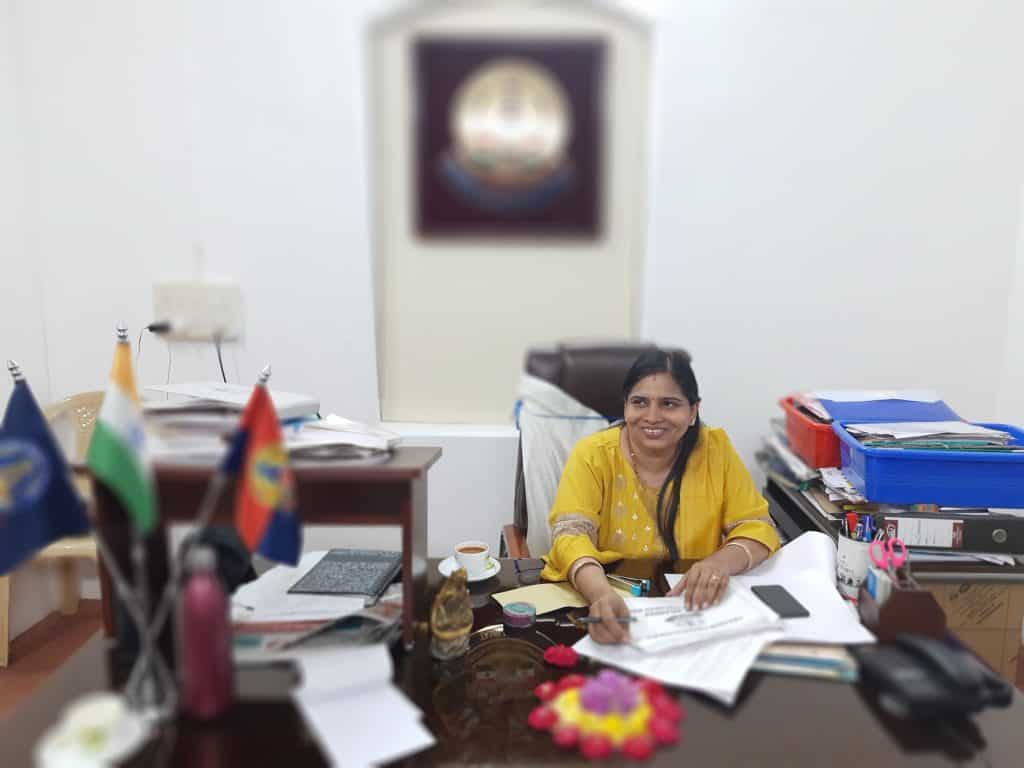Pink is the colour of women empowerment in Tamil Nadu these days. Most Chennaiites are, by now, familiar witnesses to the pink patrol vehicles of police in different parts of the city. The Amma Patrol is part of the Tamil Nadu government’s initiative that saw the formation of the Crime against Women and Children (CWC) wing in June 2019. The wing brings all departments dealing with incidents against women and children — women police stations, anti-child trafficking units, juvenile police units — under a single platform.
But what does the Amma Patrol do, exactly?
The patrol vehicles, the latest addition to the CWC wing, are equipped with state-of-the-art facilities such as GPS and cameras. Citizens in distress call up the helpline numbers for women (1091) and children (1098), following which the control room forwards the call to the patrol vehicle that is close to the spot.
Patrol police also promote the numbers through awareness campaigns in educational institutions and also through the loudspeakers from the vehicle. “Every day is challenging,” said Deputy Commissioner Jayalakshmi at the Thousand Lights Police Quarters, as she engaged in a freewheeling conversation with Citizen Matters, about the Amma Patrol services and related issues.

H Jayalakshmi, Deputy Commissioner of Police, Crime against Women and Children (CWC) wing. Pic: Laasya Shekhar
Here are some excerpts:
Let’s start with the basics. Are there any particular places where a citizen can spot Amma Patrol vehicles?
Each of the All Women Police Stations in the city is allotted a pink-coloured Amma Patrol vehicle. That makes 35 patrol vehicles in all the four police zones – North, South, East and West. Four Additional DSPs and a DC supervise the cops in the 35 police stations.
Each vehicle is manned by two cops – an officer in the rank of Inspector, Sub Inspector or Head Constable and Constable – and stationed in crowded spaces such as bus stops, near educational institutions and temples.
How can a citizen avail the service?
It is important to understand the link between the helpline numbers and the patrol vehicles. Citizens in distress call up the helpline numbers for women (1091) and children (1098). The control room forwards the call to the patrol vehicle that is close to the spot. Depending on the case, the nature of work differs. Most cases can be solved by counselling both the parties, while in a few cases, a CSR (for non-cognizable offences) or an FIR needs to be filed.
Besides attending to cases, the crucial responsibility of the patrolling officers is to prevent crime through awareness sessions: students in 90 per cent of city schools have been sensitised about the helpline numbers, and skill training and employment are being provided to slum children through collaborations with private organisations.
Do you think enough women actually know about this force?
Yes. The helpline numbers are displayed on the patrol vehicles and the officers regularly broadcast them through loudspeakers from the vehicles. This has a great impact as the women’s helpline has received 15,000 calls between June and October regarding various issues such as public nuisance, street fights, stalking and domestic abuse. Less than 1500 of them have been registered as CSRs.
Childline, on the other hand, received 1100 calls during the same period. The increasing number of calls to the helpline proves that the pink vehicles are a hit.
Wherever our police officers find a crowd, they organise the people and speak about the helpline numbers and laws for women.
Are there any notable success stories of the Amma Patrol police?
We have success stories every day. Recently, a ten-year-old kid from a village in Salem called up the helpline number and sought help. Soon, we identified it to be a fake call – the kid was only checking if the facility was functional! But this incident explains the level of awareness about the force, and we count that among our successes too.
In yet another instance, an informed neighbour complained about a child abuse case through the patrol service. “It was a case of a 1O-year-old boy being abused by his uncle. The boy’s mother kept mum, but the neighbour complained. We reached the spot and arrested the uncle after preliminary investigation. An FIR has been filed under the relevant sections of the POCSO act.
You have mentioned that cops from All Women Police Stations are operating these vehicles. Won’t that lead to a staff crunch at these stations?
No, the nature of work is the same. It is just that they go to the field now rather than being confined to the stations. Visiting a police station is still taboo for many. So now, we go to them directly to not just solve crimes but also prevent them through awareness sessions. The Amma Patrol is more like a mobile police station.
Each patrol vehicle covers at least five localities a day. They patrol from 7am to 11 am and again from 3 pm to 7 pm every day.
What do you think is the role of a citizen in averting crimes against women?
Awareness is the most fundamental prerequisite. I feel ignorance is the reason behind any crime. Every citizen should be aware of the law of the land and the ways and means to take recourse when in need.
Superb service. Citizen matters , please do Chennai branding about these services to other cities like Telangana Bangalore etc. E scooter assistance Amma canteens metro rail n so many other direct benefit schemes touching lives of ppl. Other city rulers, let them learn